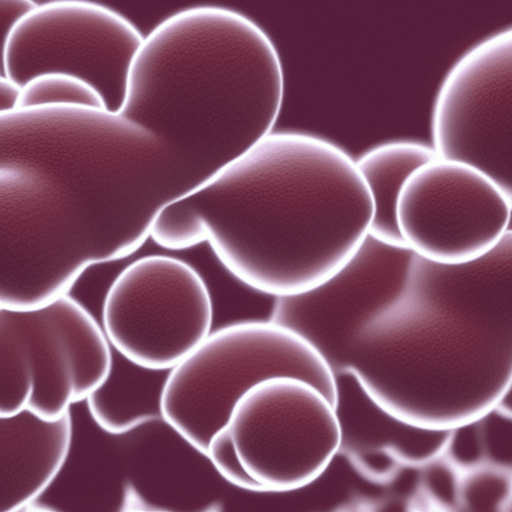The Molar Mass Of Oxygen (O2)
Oxygen is a colorless, odorless gas that is essential for human life.
The molar mass of oxygen (O2) is 32 grams per mole.
This means that there are 32 grams of oxygen in every mole of the gas.

The molar mass of oxygen is 32 grams per mole.
What is the molar mass of oxygen (O2)?
The molar mass of molecular oxygen (O2) is approximately 32.00 g/mol.
The molar mass of molecular oxygen (O2) is calculated as:
- Oxygen has an atomic number of 8, so the molar mass of one oxygen atom is 15.9994 g/mol
- Molecular oxygen (O2) consists of two oxygen atoms
- Therefore, the molar mass of O2 = 2 * molar mass of oxygen atom = 2 * 15.9994 g/mol = 31.9988 g/mol
For most purposes, this can be rounded to 32.00 g/mol.
So in summary:
Molar mass of O2 = 2 x molar mass of O atom
= 2 x 15.9994 g/mol
≈ 32.00 g/mol
The molar mass provides the mass of one mole of a substance. It is useful for various stoichiometry and conversion calculations in chemistry.
The molar mass of oxygen is 32 grams per mole.
This is determined by the number of oxygen atoms in a molecule of oxygen gas.
There are two oxygen atoms in a molecule of oxygen gas, so the molar mass of oxygen is twice the atomic mass of an oxygen atom.
The atomic mass of an oxygen atom is 16 grams per mole, so the molar mass of oxygen is 32 grams per mole.
Oxygen gas is a colorless, odorless gas that makes up about 21% of the air by volume.
It is an essential component of the air we breathe, and it is also used in a variety of industrial processes.
The molar mass of oxygen plays an important role in many chemical reactions, so it is a very important value to know.
How is the molar mass of oxygen gas calculated?
The molar mass of a gas is the mass of one mole of the gas, and it is typically expressed in units of grams per mole.

For example, the molar mass of oxygen gas is 32 grams per mole.
This value can be calculated using the Periodic Table of Elements, which lists the atomic masses of all known elements.
By adding up the atomic masses of each atom in a molecule of oxygen gas, we find that the molecule has a total mass of 32 grams.
Thus, the molar mass of oxygen gas is 32 grams per mole.
This value is important for many applications, such as determining the amount of a gas that must be used in a chemical reaction.
What is the mass of an oxygen molecule in kg?
The mass of an oxygen molecule in kg is 0.032.

This value was determined by using the atomic mass of each oxygen atom and the molar mass of oxygen gas.
The atomic masses of the two oxygen atoms are 16 and 18, and the molar mass of oxygen gas is 32.
To calculate the mass of an oxygen molecule in kg, the atomic masses of the two oxygen atoms are added together and divided by 1000.
This value is then multiplied by the molar mass of oxygen gas.
The resulting value is 0.032 kg.
This value can also be expressed as 3.2 x 10-26 kg or 3.2E-26 kg.
What is the mass of 1 mole of oxygen gas?

A mole is a unit of measurement used in chemistry to represent an Avogadro’s number of particles, which is approximately equal to 6.02 x 10^23.
This number is significant because it is the number of atoms in 12 grams of carbon-12, the isotope used to define the atomic mass unit.
One mole of a substance corresponds to its molar mass, which is the mass of the substance divided by Avogadro’s number.
The molar mass of oxygen gas is 32 g/mol, so one mole of oxygen gas has a mass of 32 grams.
- Therefore, the answer to the question is that one mole of oxygen gas has a mass of 32 grams.
- However, it is important to note that molar mass is a concept that applies to all substances, not just gases.
- For example, the molar mass of water is 18 g/mol, so one mole of water has a mass of 18 grams.
By understanding the mole and molar mass, we can better understand the properties of matter and how it behaves on both a macroscopic and subatomic level.
What does the molar mass of oxygen mean for our everyday lives?
The molar mass of oxygen is important for many aspects of our lives.
- For example, the air we breathe contains about 21% oxygen, and this percentage is necessary for us to live.
- In addition, the molar mass of oxygen influences the amount of energy that is released when burning fuels such as natural gas and gasoline.
- When burned, these fuels react with oxygen in the air to release heat energy.
- The molar mass of oxygen also determines the size of molecules in many common substances, such as water and carbon dioxide.
- Because oxygen molecules are relatively small, they can easily diffuse through cell membranes and enter cells.
This process is essential for cellular respiration, which is how our bodies generate energy.
Thus, the molar mass of oxygen plays a critical role in both our physical and our chemical lives.
Article Sources
Jacks of Science sources the most authoritative, trustworthy, and highly recognized institutions for our article research. Learn more about our Editorial Teams process and diligence in verifying the accuracy of every article we publish.